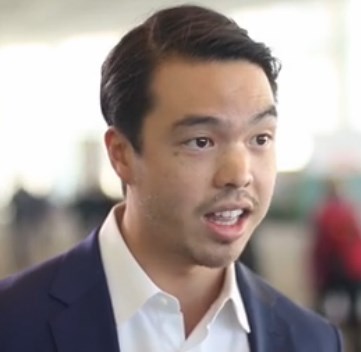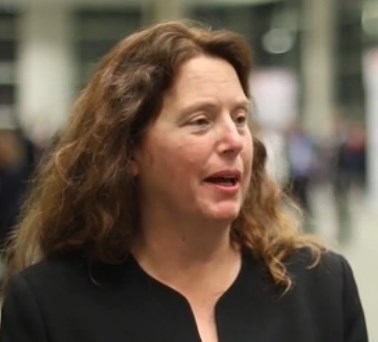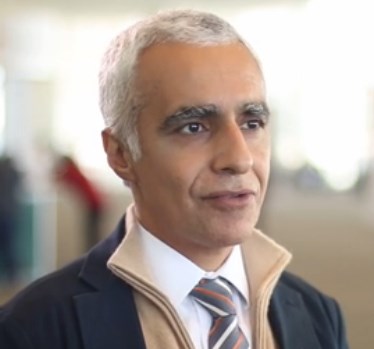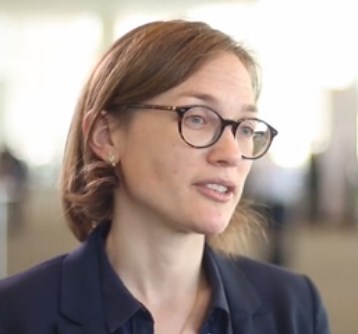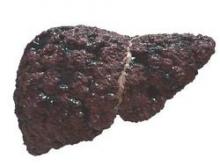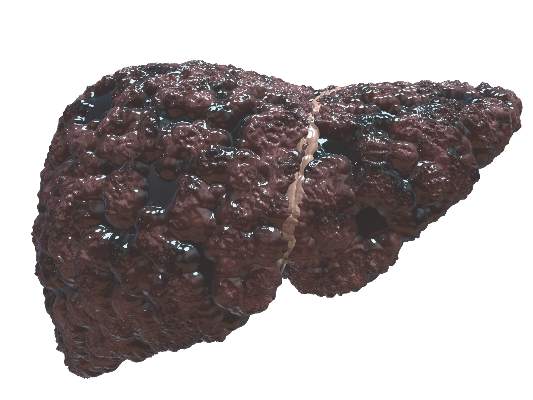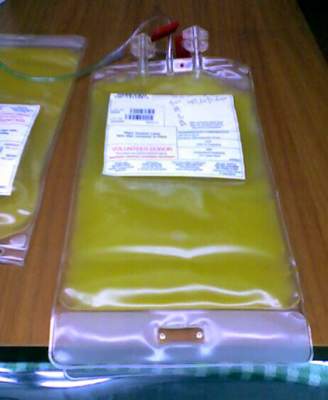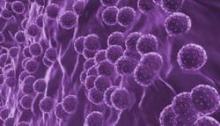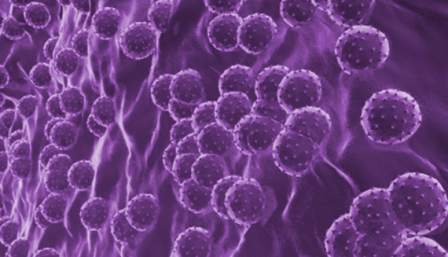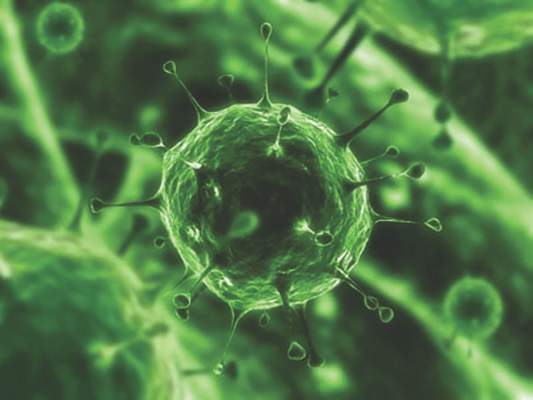User login
HCV Hub
AbbVie
acid
addicted
addiction
adolescent
adult sites
Advocacy
advocacy
agitated states
AJO, postsurgical analgesic, knee, replacement, surgery
alcohol
amphetamine
androgen
antibody
apple cider vinegar
assistance
Assistance
association
at home
attorney
audit
ayurvedic
baby
ban
baricitinib
bed bugs
best
bible
bisexual
black
bleach
blog
bulimia nervosa
buy
cannabis
certificate
certification
certified
cervical cancer, concurrent chemoradiotherapy, intravoxel incoherent motion magnetic resonance imaging, MRI, IVIM, diffusion-weighted MRI, DWI
charlie sheen
cheap
cheapest
child
childhood
childlike
children
chronic fatigue syndrome
Cladribine Tablets
cocaine
cock
combination therapies, synergistic antitumor efficacy, pertuzumab, trastuzumab, ipilimumab, nivolumab, palbociclib, letrozole, lapatinib, docetaxel, trametinib, dabrafenib, carflzomib, lenalidomide
contagious
Cortical Lesions
cream
creams
crime
criminal
cure
dangerous
dangers
dasabuvir
Dasabuvir
dead
deadly
death
dementia
dependence
dependent
depression
dermatillomania
die
diet
direct-acting antivirals
Disability
Discount
discount
dog
drink
drug abuse
drug-induced
dying
eastern medicine
eat
ect
eczema
electroconvulsive therapy
electromagnetic therapy
electrotherapy
epa
epilepsy
erectile dysfunction
explosive disorder
fake
Fake-ovir
fatal
fatalities
fatality
fibromyalgia
financial
Financial
fish oil
food
foods
foundation
free
Gabriel Pardo
gaston
general hospital
genetic
geriatric
Giancarlo Comi
gilead
Gilead
glaucoma
Glenn S. Williams
Glenn Williams
Gloria Dalla Costa
gonorrhea
Greedy
greedy
guns
hallucinations
harvoni
Harvoni
herbal
herbs
heroin
herpes
Hidradenitis Suppurativa,
holistic
home
home remedies
home remedy
homeopathic
homeopathy
hydrocortisone
ice
image
images
job
kid
kids
kill
killer
laser
lawsuit
lawyer
ledipasvir
Ledipasvir
lesbian
lesions
lights
liver
lupus
marijuana
melancholic
memory loss
menopausal
mental retardation
military
milk
moisturizers
monoamine oxidase inhibitor drugs
MRI
MS
murder
national
natural
natural cure
natural cures
natural medications
natural medicine
natural medicines
natural remedies
natural remedy
natural treatment
natural treatments
naturally
Needy
needy
Neurology Reviews
neuropathic
nightclub massacre
nightclub shooting
nude
nudity
nutraceuticals
OASIS
oasis
off label
ombitasvir
Ombitasvir
ombitasvir/paritaprevir/ritonavir with dasabuvir
orlando shooting
overactive thyroid gland
overdose
overdosed
Paolo Preziosa
paritaprevir
Paritaprevir
pediatric
pedophile
photo
photos
picture
post partum
postnatal
pregnancy
pregnant
prenatal
prepartum
prison
program
Program
Protest
protest
psychedelics
pulse nightclub
puppy
purchase
purchasing
rape
recall
recreational drug
Rehabilitation
Retinal Measurements
retrograde ejaculation
risperdal
ritonavir
Ritonavir
ritonavir with dasabuvir
robin williams
sales
sasquatch
schizophrenia
seizure
seizures
sex
sexual
sexy
shock treatment
silver
sleep disorders
smoking
sociopath
sofosbuvir
Sofosbuvir
sovaldi
ssri
store
sue
suicidal
suicide
supplements
support
Support
Support Path
teen
teenage
teenagers
Telerehabilitation
testosterone
Th17
Th17:FoxP3+Treg cell ratio
Th22
toxic
toxin
tragedy
treatment resistant
V Pak
vagina
velpatasvir
Viekira Pa
Viekira Pak
viekira pak
violence
virgin
vitamin
VPak
weight loss
withdrawal
wrinkles
xxx
young adult
young adults
zoloft
financial
sofosbuvir
ritonavir with dasabuvir
discount
support path
program
ritonavir
greedy
ledipasvir
assistance
viekira pak
vpak
advocacy
needy
protest
abbvie
paritaprevir
ombitasvir
direct-acting antivirals
dasabuvir
gilead
fake-ovir
support
v pak
oasis
harvoni
New direct-acting antivirals for HCV perform well in real world
SAN FRANCISCO – The very high sustained virologic response (SVR) rates achieved with direct-acting antiretroviral agents in clinical trials are being replicated in the real-world setting, according to data from 1,225 patients presented in a late-breaker study at the annual meeting of the American Association for the Study of Liver Diseases.
The rates of SVR, treatment failure, and discontinuation of treatment among genotype 1 HCV patients treated with such direct-acting antivirals such as ledipasvir (LDV), sofosbuvir (SOF), and ombitasvir appear to be at least as good outside of clinical studies as those reported in the phase III trials, reported Dr. Nezam H. Afdhal of Beth Israel Deaconess Medical Center, Boston.
“Overall, SVR in real-world [genotype 1] patients was 94% across regimens and patient characteristics,” Dr. Afdhal reported.
In this study, the goal was to evaluate patients with genotype 1 HCV who failed 12-weeks of a multidrug regimen containing a direct-acting antiretroviral agent. The focus was on three regimens: ledipasvir/sofosbuvir (LDV/SOF); ombitasvir/paritaprevir/ritonavir + dasabuvir (VKP); and simeprevir/sofosbuvir (SMV/SOF). All three were evaluated with or without ribavirin. The data were collected from the Trio Health Innervation Platform, a cloud-based disease management program.
Over a nearly 18-month period from January 2014 to March 2015, 1,225 patients were treated with one of the regimens. SVR 12 weeks after completion of treatment was 94% for LDV/SOF, 97% for LDV/SOF with ribavirin, 91% for VKP with or without ribavirin, and 78% for SMV/SOF with or without ribavirin.
In total, 35 patients did not achieve SVR. Of these, six discontinued therapy before completing the regimen. The 29 who completed therapy were classified as virologic failures and were compared to those who did achieve SVR to determine factors associated with failure. Failure was not associated with being treated in a community practice relative to an academic center and there was no association between failure and age, race, viral load at baseline, presence of HIV co-infection, or prior liver transplant.
However, there were significant associations for treatment failure with male gender (P = .011), presence of cirrhosis (P less than .001), platelet count less than 100,000/mL (P less than .001) and prior treatment failure (P = .016).
Discontinuation rates for the new direct-acting antivirals are “not a major issue” in real world clinical practice, Dr. Afdhal said, adding that the findings support rates of efficacy comparable to those observed in phase III trials. The data indicated that patients with cirrhosis, thrombocytopenia, and prior treatment failure represent “the most difficult to treat” who may require intensified therapy, but the “remarkable” efficacy of these newer agents previously reported in controlled trials can be anticipated in routine patient care.
SAN FRANCISCO – The very high sustained virologic response (SVR) rates achieved with direct-acting antiretroviral agents in clinical trials are being replicated in the real-world setting, according to data from 1,225 patients presented in a late-breaker study at the annual meeting of the American Association for the Study of Liver Diseases.
The rates of SVR, treatment failure, and discontinuation of treatment among genotype 1 HCV patients treated with such direct-acting antivirals such as ledipasvir (LDV), sofosbuvir (SOF), and ombitasvir appear to be at least as good outside of clinical studies as those reported in the phase III trials, reported Dr. Nezam H. Afdhal of Beth Israel Deaconess Medical Center, Boston.
“Overall, SVR in real-world [genotype 1] patients was 94% across regimens and patient characteristics,” Dr. Afdhal reported.
In this study, the goal was to evaluate patients with genotype 1 HCV who failed 12-weeks of a multidrug regimen containing a direct-acting antiretroviral agent. The focus was on three regimens: ledipasvir/sofosbuvir (LDV/SOF); ombitasvir/paritaprevir/ritonavir + dasabuvir (VKP); and simeprevir/sofosbuvir (SMV/SOF). All three were evaluated with or without ribavirin. The data were collected from the Trio Health Innervation Platform, a cloud-based disease management program.
Over a nearly 18-month period from January 2014 to March 2015, 1,225 patients were treated with one of the regimens. SVR 12 weeks after completion of treatment was 94% for LDV/SOF, 97% for LDV/SOF with ribavirin, 91% for VKP with or without ribavirin, and 78% for SMV/SOF with or without ribavirin.
In total, 35 patients did not achieve SVR. Of these, six discontinued therapy before completing the regimen. The 29 who completed therapy were classified as virologic failures and were compared to those who did achieve SVR to determine factors associated with failure. Failure was not associated with being treated in a community practice relative to an academic center and there was no association between failure and age, race, viral load at baseline, presence of HIV co-infection, or prior liver transplant.
However, there were significant associations for treatment failure with male gender (P = .011), presence of cirrhosis (P less than .001), platelet count less than 100,000/mL (P less than .001) and prior treatment failure (P = .016).
Discontinuation rates for the new direct-acting antivirals are “not a major issue” in real world clinical practice, Dr. Afdhal said, adding that the findings support rates of efficacy comparable to those observed in phase III trials. The data indicated that patients with cirrhosis, thrombocytopenia, and prior treatment failure represent “the most difficult to treat” who may require intensified therapy, but the “remarkable” efficacy of these newer agents previously reported in controlled trials can be anticipated in routine patient care.
SAN FRANCISCO – The very high sustained virologic response (SVR) rates achieved with direct-acting antiretroviral agents in clinical trials are being replicated in the real-world setting, according to data from 1,225 patients presented in a late-breaker study at the annual meeting of the American Association for the Study of Liver Diseases.
The rates of SVR, treatment failure, and discontinuation of treatment among genotype 1 HCV patients treated with such direct-acting antivirals such as ledipasvir (LDV), sofosbuvir (SOF), and ombitasvir appear to be at least as good outside of clinical studies as those reported in the phase III trials, reported Dr. Nezam H. Afdhal of Beth Israel Deaconess Medical Center, Boston.
“Overall, SVR in real-world [genotype 1] patients was 94% across regimens and patient characteristics,” Dr. Afdhal reported.
In this study, the goal was to evaluate patients with genotype 1 HCV who failed 12-weeks of a multidrug regimen containing a direct-acting antiretroviral agent. The focus was on three regimens: ledipasvir/sofosbuvir (LDV/SOF); ombitasvir/paritaprevir/ritonavir + dasabuvir (VKP); and simeprevir/sofosbuvir (SMV/SOF). All three were evaluated with or without ribavirin. The data were collected from the Trio Health Innervation Platform, a cloud-based disease management program.
Over a nearly 18-month period from January 2014 to March 2015, 1,225 patients were treated with one of the regimens. SVR 12 weeks after completion of treatment was 94% for LDV/SOF, 97% for LDV/SOF with ribavirin, 91% for VKP with or without ribavirin, and 78% for SMV/SOF with or without ribavirin.
In total, 35 patients did not achieve SVR. Of these, six discontinued therapy before completing the regimen. The 29 who completed therapy were classified as virologic failures and were compared to those who did achieve SVR to determine factors associated with failure. Failure was not associated with being treated in a community practice relative to an academic center and there was no association between failure and age, race, viral load at baseline, presence of HIV co-infection, or prior liver transplant.
However, there were significant associations for treatment failure with male gender (P = .011), presence of cirrhosis (P less than .001), platelet count less than 100,000/mL (P less than .001) and prior treatment failure (P = .016).
Discontinuation rates for the new direct-acting antivirals are “not a major issue” in real world clinical practice, Dr. Afdhal said, adding that the findings support rates of efficacy comparable to those observed in phase III trials. The data indicated that patients with cirrhosis, thrombocytopenia, and prior treatment failure represent “the most difficult to treat” who may require intensified therapy, but the “remarkable” efficacy of these newer agents previously reported in controlled trials can be anticipated in routine patient care.
AT THE LIVER MEETING 2015
Key clinical point: Treatment failure on the new direct-acting antiviral therapies for hepatitis C virus (HCV) is uncommon in real-world practice.
Major finding: Three major factors predict treatment failure: cirrhosis, thrombocytopenia, and prior treatment failure.
Data source: Retrospective analysis of 1,225 patients with genotype 1 HCV.
Disclosures: Dr. Afdhal reported a financial relationship with Trio Health Care.
VIDEO: Survival benefits, relapse risks in liver transplant for alcoholic hepatitis
SAN FRANCISCO – Are policies requiring 6 months of abstinence before liver transplantation in severe alcoholic hepatitis justified, given the potential survival advantage that earlier transplantation offers?
Alcoholic hepatitis has an “exceptionally high mortality rate,” noted Dr. Brian Lee of Johns Hopkins University, Baltimore. But a policy requiring 6 months of abstinence before liver transplantation in patients with severe alcoholic hepatitis “is possibly even causing a precondition that’s death for these patients.”
In an interview at the annual meeting of the American Association for the Study of Liver Diseases, Dr. Lee discussed a study in which early liver transplantation in 40 patients with severe alcoholic hepatitis achieved a 100% survival rate at 1 year, with a 22% alcohol relapse rate.
The video associated with this article is no longer available on this site. Please view all of our videos on the MDedge YouTube channel
SAN FRANCISCO – Are policies requiring 6 months of abstinence before liver transplantation in severe alcoholic hepatitis justified, given the potential survival advantage that earlier transplantation offers?
Alcoholic hepatitis has an “exceptionally high mortality rate,” noted Dr. Brian Lee of Johns Hopkins University, Baltimore. But a policy requiring 6 months of abstinence before liver transplantation in patients with severe alcoholic hepatitis “is possibly even causing a precondition that’s death for these patients.”
In an interview at the annual meeting of the American Association for the Study of Liver Diseases, Dr. Lee discussed a study in which early liver transplantation in 40 patients with severe alcoholic hepatitis achieved a 100% survival rate at 1 year, with a 22% alcohol relapse rate.
The video associated with this article is no longer available on this site. Please view all of our videos on the MDedge YouTube channel
SAN FRANCISCO – Are policies requiring 6 months of abstinence before liver transplantation in severe alcoholic hepatitis justified, given the potential survival advantage that earlier transplantation offers?
Alcoholic hepatitis has an “exceptionally high mortality rate,” noted Dr. Brian Lee of Johns Hopkins University, Baltimore. But a policy requiring 6 months of abstinence before liver transplantation in patients with severe alcoholic hepatitis “is possibly even causing a precondition that’s death for these patients.”
In an interview at the annual meeting of the American Association for the Study of Liver Diseases, Dr. Lee discussed a study in which early liver transplantation in 40 patients with severe alcoholic hepatitis achieved a 100% survival rate at 1 year, with a 22% alcohol relapse rate.
The video associated with this article is no longer available on this site. Please view all of our videos on the MDedge YouTube channel
AT THE LIVER MEETING 2015
VIDEO: Ledipasvir/sofosbuvir highly effective in treatment-naive HCV GT1
SAN FRANCISCO – Combination treatment with ledipasvir/sofosbuvir is highly effective for treatment-naive hepatitis C virus genotype 1 patients in routine medical practices, according to findings from a large observational cohort study.
Of 4,365 treatment-naive genotype 1 hepatitis C virus (GT1 HCV)–infected patients identified from the Veterans Affairs Clinical Case Registries who initiated 8 or 12 weeks of ledipasvir/sofosbuvir (LDV/SOF) with or without ribavirin, more than 90% had undetectable levels of HCV RNA at the end of treatment, Dr. Lisa I. Backus of the VA Palo Alto (Calif.) Health Care System reported at the annual meeting of the American Association for the Study of Liver Diseases.
Sustained virologic response rates were “amazingly high” in this large, real-world cohort, Dr. Backus said, explaining that, historically, the veteran population has had substantially lower response rates than those seen in clinical trials.
“To our surprise and great delight, the SVR rates we’re seeing … nearly match those seen in clinical trials,” she said.
In this interview at the meeting, she discusses her findings and some of the clinical implications, including the possibility that 8 weeks of treatment may be more cost-effective than 12 weeks in non-cirrhotic treatment-naive HCV GT1 patients.
The video associated with this article is no longer available on this site. Please view all of our videos on the MDedge YouTube channel
SAN FRANCISCO – Combination treatment with ledipasvir/sofosbuvir is highly effective for treatment-naive hepatitis C virus genotype 1 patients in routine medical practices, according to findings from a large observational cohort study.
Of 4,365 treatment-naive genotype 1 hepatitis C virus (GT1 HCV)–infected patients identified from the Veterans Affairs Clinical Case Registries who initiated 8 or 12 weeks of ledipasvir/sofosbuvir (LDV/SOF) with or without ribavirin, more than 90% had undetectable levels of HCV RNA at the end of treatment, Dr. Lisa I. Backus of the VA Palo Alto (Calif.) Health Care System reported at the annual meeting of the American Association for the Study of Liver Diseases.
Sustained virologic response rates were “amazingly high” in this large, real-world cohort, Dr. Backus said, explaining that, historically, the veteran population has had substantially lower response rates than those seen in clinical trials.
“To our surprise and great delight, the SVR rates we’re seeing … nearly match those seen in clinical trials,” she said.
In this interview at the meeting, she discusses her findings and some of the clinical implications, including the possibility that 8 weeks of treatment may be more cost-effective than 12 weeks in non-cirrhotic treatment-naive HCV GT1 patients.
The video associated with this article is no longer available on this site. Please view all of our videos on the MDedge YouTube channel
SAN FRANCISCO – Combination treatment with ledipasvir/sofosbuvir is highly effective for treatment-naive hepatitis C virus genotype 1 patients in routine medical practices, according to findings from a large observational cohort study.
Of 4,365 treatment-naive genotype 1 hepatitis C virus (GT1 HCV)–infected patients identified from the Veterans Affairs Clinical Case Registries who initiated 8 or 12 weeks of ledipasvir/sofosbuvir (LDV/SOF) with or without ribavirin, more than 90% had undetectable levels of HCV RNA at the end of treatment, Dr. Lisa I. Backus of the VA Palo Alto (Calif.) Health Care System reported at the annual meeting of the American Association for the Study of Liver Diseases.
Sustained virologic response rates were “amazingly high” in this large, real-world cohort, Dr. Backus said, explaining that, historically, the veteran population has had substantially lower response rates than those seen in clinical trials.
“To our surprise and great delight, the SVR rates we’re seeing … nearly match those seen in clinical trials,” she said.
In this interview at the meeting, she discusses her findings and some of the clinical implications, including the possibility that 8 weeks of treatment may be more cost-effective than 12 weeks in non-cirrhotic treatment-naive HCV GT1 patients.
The video associated with this article is no longer available on this site. Please view all of our videos on the MDedge YouTube channel
AT THE LIVER MEETING 2015
VIDEO: PALBI score sharpened liver cancer prognosis
SAN FRANCISCO – The PALBI liver function score measuring platelet count, albumin, and bilirubin was more effective than Child-Pugh score at predicting survival in hepatocellular carcinoma patients.
“We wanted to get a purely objective score to assess liver function in people with liver disease, and also wanted a score that was more granular and had more refinement to it than [Child-Pugh score] classification,” explained Dr. Sasan Roayaie of North Shore-LIJ Health System, New York.
“By combining those three very objective, readily available lab tests, we were able to come up with a score that we were then able to show in an independent validation cohort of more than 4,000 [hepatocellular carcinoma] patients predicted survival,” he added.
In an interview at the annual meeting of the American Association for the Study of Liver Diseases, Dr. Roayaie discussed PALBI’s development and its potential clinical impact.
The video associated with this article is no longer available on this site. Please view all of our videos on the MDedge YouTube channel
SAN FRANCISCO – The PALBI liver function score measuring platelet count, albumin, and bilirubin was more effective than Child-Pugh score at predicting survival in hepatocellular carcinoma patients.
“We wanted to get a purely objective score to assess liver function in people with liver disease, and also wanted a score that was more granular and had more refinement to it than [Child-Pugh score] classification,” explained Dr. Sasan Roayaie of North Shore-LIJ Health System, New York.
“By combining those three very objective, readily available lab tests, we were able to come up with a score that we were then able to show in an independent validation cohort of more than 4,000 [hepatocellular carcinoma] patients predicted survival,” he added.
In an interview at the annual meeting of the American Association for the Study of Liver Diseases, Dr. Roayaie discussed PALBI’s development and its potential clinical impact.
The video associated with this article is no longer available on this site. Please view all of our videos on the MDedge YouTube channel
SAN FRANCISCO – The PALBI liver function score measuring platelet count, albumin, and bilirubin was more effective than Child-Pugh score at predicting survival in hepatocellular carcinoma patients.
“We wanted to get a purely objective score to assess liver function in people with liver disease, and also wanted a score that was more granular and had more refinement to it than [Child-Pugh score] classification,” explained Dr. Sasan Roayaie of North Shore-LIJ Health System, New York.
“By combining those three very objective, readily available lab tests, we were able to come up with a score that we were then able to show in an independent validation cohort of more than 4,000 [hepatocellular carcinoma] patients predicted survival,” he added.
In an interview at the annual meeting of the American Association for the Study of Liver Diseases, Dr. Roayaie discussed PALBI’s development and its potential clinical impact.
The video associated with this article is no longer available on this site. Please view all of our videos on the MDedge YouTube channel
AT THE LIVER MEETING 2015
VIDEO: Eating before liver stiffness test may skew results
SAN FRANCISCO – Expanding the time between a liver fibrosis patient’s last meal and liver stiffness test may improve the accuracy of the test, according to a Danish study.
In patients referred for high liver stiffness, “we noticed that, when we called them in for a repeat liver stiffness measurement in a fasting state, that suddenly one patient with a high liver stiffness would have normal liver stiffness,” explained study researcher Dr. Maja Thiele of Odense (Denmark) University Hospital. “Potentially, this would have been a patient that we would have biopsied.”
In an interview at the annual meeting of the American Association for the Study of Liver Diseases, Dr. Thiele discussed the study’s findings and the clinical implications of food intake on subsequent liver stiffness test results, and she explained how long liver fibrosis patients should wait after a meal to undergo liver stiffness testing.
The video associated with this article is no longer available on this site. Please view all of our videos on the MDedge YouTube channel
SAN FRANCISCO – Expanding the time between a liver fibrosis patient’s last meal and liver stiffness test may improve the accuracy of the test, according to a Danish study.
In patients referred for high liver stiffness, “we noticed that, when we called them in for a repeat liver stiffness measurement in a fasting state, that suddenly one patient with a high liver stiffness would have normal liver stiffness,” explained study researcher Dr. Maja Thiele of Odense (Denmark) University Hospital. “Potentially, this would have been a patient that we would have biopsied.”
In an interview at the annual meeting of the American Association for the Study of Liver Diseases, Dr. Thiele discussed the study’s findings and the clinical implications of food intake on subsequent liver stiffness test results, and she explained how long liver fibrosis patients should wait after a meal to undergo liver stiffness testing.
The video associated with this article is no longer available on this site. Please view all of our videos on the MDedge YouTube channel
SAN FRANCISCO – Expanding the time between a liver fibrosis patient’s last meal and liver stiffness test may improve the accuracy of the test, according to a Danish study.
In patients referred for high liver stiffness, “we noticed that, when we called them in for a repeat liver stiffness measurement in a fasting state, that suddenly one patient with a high liver stiffness would have normal liver stiffness,” explained study researcher Dr. Maja Thiele of Odense (Denmark) University Hospital. “Potentially, this would have been a patient that we would have biopsied.”
In an interview at the annual meeting of the American Association for the Study of Liver Diseases, Dr. Thiele discussed the study’s findings and the clinical implications of food intake on subsequent liver stiffness test results, and she explained how long liver fibrosis patients should wait after a meal to undergo liver stiffness testing.
The video associated with this article is no longer available on this site. Please view all of our videos on the MDedge YouTube channel
AT THE LIVER MEETING 2015
Pan-caspase inhibitor controls cirrhosis-associated portal hypertension
Emricasan, a caspase inhibitor, achieves a significant reduction in portal pressure among patients with cirrhosis and severe portal hypertension, according to the abstract for a proof-of-concept study that will be presented as a late-breaker at the annual meeting of the American Association for the Study of Liver Disease (AASLD).
The results of this multicenter, open-label study are consistent with benefits in animal models of portal hypertension in which emricasan has not only lowered pressure but improved survival, according to Dr. Guadalupe Garcia-Tsao, director, Clinical and Translational Core, Yale Liver Center, Yale University, New Haven, Conn.
The study enrolled 23 patients with compensated cirrhosis and portal hypertension, defined as a hepatic venous pressure gradient (HVPG) greater than 5 mm Hg. The underlying etiology for the cirrhosis in most patients was nonalcoholic steatohepatitis (NASH) or hepatitis C viral (HCV) infection. The median MELD (model for end-stage liver disease) score was 8 but ranged as high as 15. Nearly 90% were in Child-Pugh class A.
Patients received 25 mg emricasan orally twice per day for 28 days. The primary outcome was change in HVPG, which was evaluated with a standardized protocol. A single expert read all HVPG tracings.
Although the median HVPG values for the study population overall were not changed significantly when baseline and end-of-treatment measures were compared (13.5 vs. 13.0 mm Hg), a significant reduction was observed in those with the most severe portal hypertension as defined by a HVPG score greater than or equal to 12 mm Hg. Among the 12 patients with this degree of severity, the mean decrease of 3.7 mm Hg represented a 17.2% reduction (P less than .003) from baseline. All had at least a 10% reduction and four of the 12 had a reduction greater than 20%.
In those with severe portal hypertension achieving pressure reductions as well as in the overall study population, emricasan was associated with significant reductions in levels of the liver enzymes aspartate aminotransferase and alanine aminotransferase. In addition, emricasan treatment was associated with significant declines in the serum levels of cCk18 and caspase 3/7, which are markers of apoptosis. These findings are consistent with the mechanism of benefit suggested by studies previously undertaken in murine models of portal hypertension.
“Caspases play a central role in apoptosis and inflammation. They produce hemodynamically active, proinflammatory microparticles that appear to contribute to the vasodilation that maintains and enhances portal hypertension in cirrhosis,” Dr. Garcia-Tsao explained. She suggested that the reduction in liver enzymes also suggests an intrahepatic anti-inflammatory effect.
Further study of emricasan, which was characterized as a “pan-caspase inhibitor” is encouraged by the acceptable tolerability observed in this study. Although one participant did leave the study early because of a side effect, it was considered not serious. It cannot be determined from this study whether the benefits observed in those with severe portal hypertension were due to protective effects on liver cells rather than a hemodynamic mechanism, but the potential for this agent to prevent microvascular remodeling has implications for preventing progression and end-stage events.
Dr. Garcia-Tsao reported financial relationships with AbbVie and FibroGen.
Emricasan, a caspase inhibitor, achieves a significant reduction in portal pressure among patients with cirrhosis and severe portal hypertension, according to the abstract for a proof-of-concept study that will be presented as a late-breaker at the annual meeting of the American Association for the Study of Liver Disease (AASLD).
The results of this multicenter, open-label study are consistent with benefits in animal models of portal hypertension in which emricasan has not only lowered pressure but improved survival, according to Dr. Guadalupe Garcia-Tsao, director, Clinical and Translational Core, Yale Liver Center, Yale University, New Haven, Conn.
The study enrolled 23 patients with compensated cirrhosis and portal hypertension, defined as a hepatic venous pressure gradient (HVPG) greater than 5 mm Hg. The underlying etiology for the cirrhosis in most patients was nonalcoholic steatohepatitis (NASH) or hepatitis C viral (HCV) infection. The median MELD (model for end-stage liver disease) score was 8 but ranged as high as 15. Nearly 90% were in Child-Pugh class A.
Patients received 25 mg emricasan orally twice per day for 28 days. The primary outcome was change in HVPG, which was evaluated with a standardized protocol. A single expert read all HVPG tracings.
Although the median HVPG values for the study population overall were not changed significantly when baseline and end-of-treatment measures were compared (13.5 vs. 13.0 mm Hg), a significant reduction was observed in those with the most severe portal hypertension as defined by a HVPG score greater than or equal to 12 mm Hg. Among the 12 patients with this degree of severity, the mean decrease of 3.7 mm Hg represented a 17.2% reduction (P less than .003) from baseline. All had at least a 10% reduction and four of the 12 had a reduction greater than 20%.
In those with severe portal hypertension achieving pressure reductions as well as in the overall study population, emricasan was associated with significant reductions in levels of the liver enzymes aspartate aminotransferase and alanine aminotransferase. In addition, emricasan treatment was associated with significant declines in the serum levels of cCk18 and caspase 3/7, which are markers of apoptosis. These findings are consistent with the mechanism of benefit suggested by studies previously undertaken in murine models of portal hypertension.
“Caspases play a central role in apoptosis and inflammation. They produce hemodynamically active, proinflammatory microparticles that appear to contribute to the vasodilation that maintains and enhances portal hypertension in cirrhosis,” Dr. Garcia-Tsao explained. She suggested that the reduction in liver enzymes also suggests an intrahepatic anti-inflammatory effect.
Further study of emricasan, which was characterized as a “pan-caspase inhibitor” is encouraged by the acceptable tolerability observed in this study. Although one participant did leave the study early because of a side effect, it was considered not serious. It cannot be determined from this study whether the benefits observed in those with severe portal hypertension were due to protective effects on liver cells rather than a hemodynamic mechanism, but the potential for this agent to prevent microvascular remodeling has implications for preventing progression and end-stage events.
Dr. Garcia-Tsao reported financial relationships with AbbVie and FibroGen.
Emricasan, a caspase inhibitor, achieves a significant reduction in portal pressure among patients with cirrhosis and severe portal hypertension, according to the abstract for a proof-of-concept study that will be presented as a late-breaker at the annual meeting of the American Association for the Study of Liver Disease (AASLD).
The results of this multicenter, open-label study are consistent with benefits in animal models of portal hypertension in which emricasan has not only lowered pressure but improved survival, according to Dr. Guadalupe Garcia-Tsao, director, Clinical and Translational Core, Yale Liver Center, Yale University, New Haven, Conn.
The study enrolled 23 patients with compensated cirrhosis and portal hypertension, defined as a hepatic venous pressure gradient (HVPG) greater than 5 mm Hg. The underlying etiology for the cirrhosis in most patients was nonalcoholic steatohepatitis (NASH) or hepatitis C viral (HCV) infection. The median MELD (model for end-stage liver disease) score was 8 but ranged as high as 15. Nearly 90% were in Child-Pugh class A.
Patients received 25 mg emricasan orally twice per day for 28 days. The primary outcome was change in HVPG, which was evaluated with a standardized protocol. A single expert read all HVPG tracings.
Although the median HVPG values for the study population overall were not changed significantly when baseline and end-of-treatment measures were compared (13.5 vs. 13.0 mm Hg), a significant reduction was observed in those with the most severe portal hypertension as defined by a HVPG score greater than or equal to 12 mm Hg. Among the 12 patients with this degree of severity, the mean decrease of 3.7 mm Hg represented a 17.2% reduction (P less than .003) from baseline. All had at least a 10% reduction and four of the 12 had a reduction greater than 20%.
In those with severe portal hypertension achieving pressure reductions as well as in the overall study population, emricasan was associated with significant reductions in levels of the liver enzymes aspartate aminotransferase and alanine aminotransferase. In addition, emricasan treatment was associated with significant declines in the serum levels of cCk18 and caspase 3/7, which are markers of apoptosis. These findings are consistent with the mechanism of benefit suggested by studies previously undertaken in murine models of portal hypertension.
“Caspases play a central role in apoptosis and inflammation. They produce hemodynamically active, proinflammatory microparticles that appear to contribute to the vasodilation that maintains and enhances portal hypertension in cirrhosis,” Dr. Garcia-Tsao explained. She suggested that the reduction in liver enzymes also suggests an intrahepatic anti-inflammatory effect.
Further study of emricasan, which was characterized as a “pan-caspase inhibitor” is encouraged by the acceptable tolerability observed in this study. Although one participant did leave the study early because of a side effect, it was considered not serious. It cannot be determined from this study whether the benefits observed in those with severe portal hypertension were due to protective effects on liver cells rather than a hemodynamic mechanism, but the potential for this agent to prevent microvascular remodeling has implications for preventing progression and end-stage events.
Dr. Garcia-Tsao reported financial relationships with AbbVie and FibroGen.
FROM THE LIVER MEETING 2015
Key clinical point: The experimental caspase inhibitor emricasan significantly reduced portal pressure in patients with compensated cirrhosis and severe portal hypertension in a proof-of-concept study.
Major finding: The association between reduced portal pressure and markers of apoptosis and liver cell injury are consistent with an intrahepatic effect that may inhibit microvascular remodeling.
Data source: Multicenter open-label study.
Disclosures: Dr. Garcia-Tsao reported financial relationships with AbbVie and FibroGen.
Lusutrombopag is effective for thrombocytopenia in liver disease
Lusutrombopag, an oral thrombopoietin receptor agonist, was found to reduce the need for platelet transfusion in patients with chronic liver disease with a planned invasive procedure, according to results in an abstract of a phase III trial that will be presented as a latebreaker at the annual meeting of the American Association for the Study of Liver Disease in San Francisco.
The novel therapy, which upregulates platelet production, was “efficacious and well tolerated,” producing a reduced risk of overall adverse events, including bleeding events, according to Dr. Namiki Izumi, Musashino Red Cross Hospital, Tokyo.
In this ongoing global phase III trial, called L-PLUS 2, 96 patients with chronic liver disease, a platelet count less than 50,000/microL, and a planned invasive procedure were randomized to receive a once-daily 3-mg tablet of lusutrombopag or a matching placebo for 7 days. The primary endpoint was the need for a preoperative platelet transfusion.
“The proportion of patients who required no preoperative platelet transfusion was significantly greater with lusutrombopag [29.2% vs. 12.5%; P less than .0001],” Dr. Izumi reported. The proportion of responders, defined by a platelet count greater than or equal to 50,000/microL and a greater than or equal to 20,000/microL-increase from baseline, was also significantly greater in the lusutrombopag arm (77.1% vs. 6.3%; P less than .0001).
In addition, the median time with a platelet count greater than or equal to 50,000/microL was 22.1 days in those who received lusutrombopag but no platelet transfusion versus 3.3 days in the placebo patients who did receive transfusion (P less than 0.0001).
Many adverse events occurred less frequently in the arm randomized to lusutrombopag. This included bleeding events (14.6% vs. 27.1%) and postoperative fever (39.6% vs. 56.3%). The rates of procedural hypertension (41.7% vs. 37.5%) and procedural pain (45.8% vs. 41.7%) were slightly greater in the group randomized to lusutrombopag, but elevations in liver enzymes, such as aspartate aminotransferase (22.9% vs. 31.3%) were somewhat lower.
“Protocol-required imaging revealed one thromboembolic event of the portal venous system in each study arm, neither of which was related to platelets,” according to Dr. Izumi, who reported that no patient discontinued therapy as a result of an adverse event.
Because of the frequency with which thrombocytopenia is observed in patients with chronic liver disease, platelet transfusion is considered a standard procedure when an invasive intervention is planned, according to Dr. Izumi. The data from this trial suggest that preoperative treatment with lusutrombopag may be an alternative.
Dr. Izumi reported financial relationships with Bayer, Daiichi Sankyo, Gilead, Merck, and Shionogi.
Lusutrombopag, an oral thrombopoietin receptor agonist, was found to reduce the need for platelet transfusion in patients with chronic liver disease with a planned invasive procedure, according to results in an abstract of a phase III trial that will be presented as a latebreaker at the annual meeting of the American Association for the Study of Liver Disease in San Francisco.
The novel therapy, which upregulates platelet production, was “efficacious and well tolerated,” producing a reduced risk of overall adverse events, including bleeding events, according to Dr. Namiki Izumi, Musashino Red Cross Hospital, Tokyo.
In this ongoing global phase III trial, called L-PLUS 2, 96 patients with chronic liver disease, a platelet count less than 50,000/microL, and a planned invasive procedure were randomized to receive a once-daily 3-mg tablet of lusutrombopag or a matching placebo for 7 days. The primary endpoint was the need for a preoperative platelet transfusion.
“The proportion of patients who required no preoperative platelet transfusion was significantly greater with lusutrombopag [29.2% vs. 12.5%; P less than .0001],” Dr. Izumi reported. The proportion of responders, defined by a platelet count greater than or equal to 50,000/microL and a greater than or equal to 20,000/microL-increase from baseline, was also significantly greater in the lusutrombopag arm (77.1% vs. 6.3%; P less than .0001).
In addition, the median time with a platelet count greater than or equal to 50,000/microL was 22.1 days in those who received lusutrombopag but no platelet transfusion versus 3.3 days in the placebo patients who did receive transfusion (P less than 0.0001).
Many adverse events occurred less frequently in the arm randomized to lusutrombopag. This included bleeding events (14.6% vs. 27.1%) and postoperative fever (39.6% vs. 56.3%). The rates of procedural hypertension (41.7% vs. 37.5%) and procedural pain (45.8% vs. 41.7%) were slightly greater in the group randomized to lusutrombopag, but elevations in liver enzymes, such as aspartate aminotransferase (22.9% vs. 31.3%) were somewhat lower.
“Protocol-required imaging revealed one thromboembolic event of the portal venous system in each study arm, neither of which was related to platelets,” according to Dr. Izumi, who reported that no patient discontinued therapy as a result of an adverse event.
Because of the frequency with which thrombocytopenia is observed in patients with chronic liver disease, platelet transfusion is considered a standard procedure when an invasive intervention is planned, according to Dr. Izumi. The data from this trial suggest that preoperative treatment with lusutrombopag may be an alternative.
Dr. Izumi reported financial relationships with Bayer, Daiichi Sankyo, Gilead, Merck, and Shionogi.
Lusutrombopag, an oral thrombopoietin receptor agonist, was found to reduce the need for platelet transfusion in patients with chronic liver disease with a planned invasive procedure, according to results in an abstract of a phase III trial that will be presented as a latebreaker at the annual meeting of the American Association for the Study of Liver Disease in San Francisco.
The novel therapy, which upregulates platelet production, was “efficacious and well tolerated,” producing a reduced risk of overall adverse events, including bleeding events, according to Dr. Namiki Izumi, Musashino Red Cross Hospital, Tokyo.
In this ongoing global phase III trial, called L-PLUS 2, 96 patients with chronic liver disease, a platelet count less than 50,000/microL, and a planned invasive procedure were randomized to receive a once-daily 3-mg tablet of lusutrombopag or a matching placebo for 7 days. The primary endpoint was the need for a preoperative platelet transfusion.
“The proportion of patients who required no preoperative platelet transfusion was significantly greater with lusutrombopag [29.2% vs. 12.5%; P less than .0001],” Dr. Izumi reported. The proportion of responders, defined by a platelet count greater than or equal to 50,000/microL and a greater than or equal to 20,000/microL-increase from baseline, was also significantly greater in the lusutrombopag arm (77.1% vs. 6.3%; P less than .0001).
In addition, the median time with a platelet count greater than or equal to 50,000/microL was 22.1 days in those who received lusutrombopag but no platelet transfusion versus 3.3 days in the placebo patients who did receive transfusion (P less than 0.0001).
Many adverse events occurred less frequently in the arm randomized to lusutrombopag. This included bleeding events (14.6% vs. 27.1%) and postoperative fever (39.6% vs. 56.3%). The rates of procedural hypertension (41.7% vs. 37.5%) and procedural pain (45.8% vs. 41.7%) were slightly greater in the group randomized to lusutrombopag, but elevations in liver enzymes, such as aspartate aminotransferase (22.9% vs. 31.3%) were somewhat lower.
“Protocol-required imaging revealed one thromboembolic event of the portal venous system in each study arm, neither of which was related to platelets,” according to Dr. Izumi, who reported that no patient discontinued therapy as a result of an adverse event.
Because of the frequency with which thrombocytopenia is observed in patients with chronic liver disease, platelet transfusion is considered a standard procedure when an invasive intervention is planned, according to Dr. Izumi. The data from this trial suggest that preoperative treatment with lusutrombopag may be an alternative.
Dr. Izumi reported financial relationships with Bayer, Daiichi Sankyo, Gilead, Merck, and Shionogi.
FROM THE LIVER MEETING 2015
Key clinical point: In a phase III trial, lusutrombopag was found to reduce the need for platelet transfusion in chronic liver disease patients requiring surgery.
Major finding: Prior to a planned invasive procedure, only 20.8% of lusutrombopag versus 87.5% of placebo patients (P less than .0001) required platelet transfusion.
Data source: A multicenter, double-blind phase III trial.
Disclosures: Dr. Izumi reported financial relationships with Bayer, Daiichi Sankyo, Gilead, Merck, and Shionogi.
Eight-week, three-drug regimen produces SVR over 90% in HCV
A triple antiviral combination with direct-acting antiviral (DAA) agents was associated with high rates of sustained virologic response (SVR) across all three hepatitis C virus (HCV) genotypes evaluated, according to combined data from two phase II studies described in an abstract to be presented in a late-breaker session at the annual meeting of the American Association for the Study of Liver Disease.
The robust SVR rates “support further evaluation of this three-drug combination among a diverse population of HCV-infected patients, including those with additional HCV genotypes, cirrhosis, prior treatment, and HIV/HCV coinfection,” reported Dr. Edward J. Gane, Auckland (New Zealand) District Health Board.
In the ongoing, open-label, dose-ranging studies from which the results were drawn, patients with genotypes (GT) 1, 2, or 3 HCV were treated with the NS3/4A protease inhibitor grazoprevir and the NS5B polymerase inhibitor MK-3682 plus one of two NS5A inhibitors, elbasvir or MK-84084. The three-drug combinations were administered orally once daily for 8 weeks.
In the 93 GT1 patients, the overall SVR rate 12 weeks after completion of the 8-week treatment course was 98% whether patients had HCV GT1a (46 patients) or GT1b (47 patients). There did not appear to be any significant differences in efficacy across the three-drug combinations or doses evaluated. In the two relapsers among GT1 patients, sequencing did not reveal large shifts in resistance-associated variants for NS3, NS5B, or NS5A following relapse.
In the 61 GT2 patients, responses were less homogeneous. Specifically, SVR rates 12 weeks after completion of therapy fell from 94% to rates ranging from 61% to 70% when the dose of MK-3682 or elbasvir was reduced from 450 mg to 300 mg. Although no treatment-emergent resistance-associated variants emerged on treatment, an L31M/I NS5A variant at baseline was associated with more relapses.
In the 86 GT3 patients, the overall SVR rate 12 weeks after completion of therapy was 91% with a range of 86%-95% for the various regimens evaluated, which Dr. Gane characterized as comparable. Baseline mutations A30K, L31M, or Y93H on NS5A were associated with lower rates of SVR (45% vs. 97% in the absence of these resistance-associated variants). Two of the eight GT3 relapsers acquired Y93H.
The most frequent adverse events that were considered drug related were headache, fatigue, nausea, diarrhea, flatulence, and insomnia. There were no serious adverse events observed, and no patient discontinued therapy due to an adverse event.
The data suggest that 8 weeks of a three-drug regimen that contains the NS3/4A protease inhibitor grazoprevir, the NS5B polymerase inhibitor MK-3682, and one additional NS5A inhibitor is “highly effective and well tolerated” in GT1, GT2, or GT3 HCV infection, according to Dr. Gane. Although this study was conducted in patients who were both treatment naive and noncirrhotic, Dr. Gane indicated that the results encourage further studies in more challenging HCV-infected populations.
Dr. Gane reports financial relationships with Achillion, Abbvie, Gilead, Janssen, Merck, and Novira, and Tekmira.
A triple antiviral combination with direct-acting antiviral (DAA) agents was associated with high rates of sustained virologic response (SVR) across all three hepatitis C virus (HCV) genotypes evaluated, according to combined data from two phase II studies described in an abstract to be presented in a late-breaker session at the annual meeting of the American Association for the Study of Liver Disease.
The robust SVR rates “support further evaluation of this three-drug combination among a diverse population of HCV-infected patients, including those with additional HCV genotypes, cirrhosis, prior treatment, and HIV/HCV coinfection,” reported Dr. Edward J. Gane, Auckland (New Zealand) District Health Board.
In the ongoing, open-label, dose-ranging studies from which the results were drawn, patients with genotypes (GT) 1, 2, or 3 HCV were treated with the NS3/4A protease inhibitor grazoprevir and the NS5B polymerase inhibitor MK-3682 plus one of two NS5A inhibitors, elbasvir or MK-84084. The three-drug combinations were administered orally once daily for 8 weeks.
In the 93 GT1 patients, the overall SVR rate 12 weeks after completion of the 8-week treatment course was 98% whether patients had HCV GT1a (46 patients) or GT1b (47 patients). There did not appear to be any significant differences in efficacy across the three-drug combinations or doses evaluated. In the two relapsers among GT1 patients, sequencing did not reveal large shifts in resistance-associated variants for NS3, NS5B, or NS5A following relapse.
In the 61 GT2 patients, responses were less homogeneous. Specifically, SVR rates 12 weeks after completion of therapy fell from 94% to rates ranging from 61% to 70% when the dose of MK-3682 or elbasvir was reduced from 450 mg to 300 mg. Although no treatment-emergent resistance-associated variants emerged on treatment, an L31M/I NS5A variant at baseline was associated with more relapses.
In the 86 GT3 patients, the overall SVR rate 12 weeks after completion of therapy was 91% with a range of 86%-95% for the various regimens evaluated, which Dr. Gane characterized as comparable. Baseline mutations A30K, L31M, or Y93H on NS5A were associated with lower rates of SVR (45% vs. 97% in the absence of these resistance-associated variants). Two of the eight GT3 relapsers acquired Y93H.
The most frequent adverse events that were considered drug related were headache, fatigue, nausea, diarrhea, flatulence, and insomnia. There were no serious adverse events observed, and no patient discontinued therapy due to an adverse event.
The data suggest that 8 weeks of a three-drug regimen that contains the NS3/4A protease inhibitor grazoprevir, the NS5B polymerase inhibitor MK-3682, and one additional NS5A inhibitor is “highly effective and well tolerated” in GT1, GT2, or GT3 HCV infection, according to Dr. Gane. Although this study was conducted in patients who were both treatment naive and noncirrhotic, Dr. Gane indicated that the results encourage further studies in more challenging HCV-infected populations.
Dr. Gane reports financial relationships with Achillion, Abbvie, Gilead, Janssen, Merck, and Novira, and Tekmira.
A triple antiviral combination with direct-acting antiviral (DAA) agents was associated with high rates of sustained virologic response (SVR) across all three hepatitis C virus (HCV) genotypes evaluated, according to combined data from two phase II studies described in an abstract to be presented in a late-breaker session at the annual meeting of the American Association for the Study of Liver Disease.
The robust SVR rates “support further evaluation of this three-drug combination among a diverse population of HCV-infected patients, including those with additional HCV genotypes, cirrhosis, prior treatment, and HIV/HCV coinfection,” reported Dr. Edward J. Gane, Auckland (New Zealand) District Health Board.
In the ongoing, open-label, dose-ranging studies from which the results were drawn, patients with genotypes (GT) 1, 2, or 3 HCV were treated with the NS3/4A protease inhibitor grazoprevir and the NS5B polymerase inhibitor MK-3682 plus one of two NS5A inhibitors, elbasvir or MK-84084. The three-drug combinations were administered orally once daily for 8 weeks.
In the 93 GT1 patients, the overall SVR rate 12 weeks after completion of the 8-week treatment course was 98% whether patients had HCV GT1a (46 patients) or GT1b (47 patients). There did not appear to be any significant differences in efficacy across the three-drug combinations or doses evaluated. In the two relapsers among GT1 patients, sequencing did not reveal large shifts in resistance-associated variants for NS3, NS5B, or NS5A following relapse.
In the 61 GT2 patients, responses were less homogeneous. Specifically, SVR rates 12 weeks after completion of therapy fell from 94% to rates ranging from 61% to 70% when the dose of MK-3682 or elbasvir was reduced from 450 mg to 300 mg. Although no treatment-emergent resistance-associated variants emerged on treatment, an L31M/I NS5A variant at baseline was associated with more relapses.
In the 86 GT3 patients, the overall SVR rate 12 weeks after completion of therapy was 91% with a range of 86%-95% for the various regimens evaluated, which Dr. Gane characterized as comparable. Baseline mutations A30K, L31M, or Y93H on NS5A were associated with lower rates of SVR (45% vs. 97% in the absence of these resistance-associated variants). Two of the eight GT3 relapsers acquired Y93H.
The most frequent adverse events that were considered drug related were headache, fatigue, nausea, diarrhea, flatulence, and insomnia. There were no serious adverse events observed, and no patient discontinued therapy due to an adverse event.
The data suggest that 8 weeks of a three-drug regimen that contains the NS3/4A protease inhibitor grazoprevir, the NS5B polymerase inhibitor MK-3682, and one additional NS5A inhibitor is “highly effective and well tolerated” in GT1, GT2, or GT3 HCV infection, according to Dr. Gane. Although this study was conducted in patients who were both treatment naive and noncirrhotic, Dr. Gane indicated that the results encourage further studies in more challenging HCV-infected populations.
Dr. Gane reports financial relationships with Achillion, Abbvie, Gilead, Janssen, Merck, and Novira, and Tekmira.
FROM THE LIVER MEETING 2015
Key clinical point: In genotypes 1, 2, and 3 hepatitis C virus, a three-drug combination produced encouraging sustained viral response rates after just 8 weeks of treatment.
Major finding: At 8 weeks, SVR rates on a combination of three direct-acting antivirals were 98%, 94%, and 91% in genotypes 1, 2, and 3, respectively.
Data source: Multicenter, randomized, open-label, phase II study.
Disclosures: Dr. Gane reports financial relationships with Achillion, Abbvie, Gilead, Janssen, Merck, and Novira, and Tekmira.
Sofosbuvir plus velpatasvir effective at treating HCV genotype 1 and 3 patients
Patients with genotype 1 or 3 hepatitis C virus (HCV) infection responded well to therapy with 400 mg of sofosbuvir combined with 100 mg of velpatasvir for 12 weeks, in a randomized, phase II, open-label study conducted in 58 sites in Australia, New Zealand, and the United States.
This treatment program was “well tolerated and highly effective,” according to Dr. Stephen Pianko and his colleagues.
The study participants were divided into three cohorts: the first included patients with genotype 3 HCV infection without cirrhosis, the second included patients with genotype 3 HCV with compensated cirrhosis, and the third included patients with genotype 1 HCV infection that was unsuccessfully treated with a protease inhibitor with peginterferon and ribavirin (50% could have compensated cirrhosis). All patients were treatment experienced and received 12 weeks of drug therapy that included 400 mg of sofosbuvir once daily. Patients in each cohort were randomly assigned to also being treated with 25 mg of velpatasvir once daily with or without ribavirin, or 100 mg of velpatasvir once daily with or without ribavirin.
All patients in cohort 1 who were treated with 400 mg of sofosbuvir combined with 100 mg of velpatasvir or 400 mg of sofosbuvir combined with 100 mg of velpatasvir plus ribavirin experienced a sustained virologic response at week 12 after treatment. The same was true for 100% of patients in cohort 3, who either received 400 mg of sofosbuvir combined with 25 mg velpatasvir or 400 mg of sofosbuvir combined with 100 mg of velpatasvir.
The proportion of patients in the other treatment categories who achieved sustained virologic response 12 weeks following therapy ranged from 58% to 97%.
Eighty-two percent (263 of 321) of patients experienced at least 1 adverse event. Common adverse events included headache and fatigue. "More patients in the groups receiving ribavirin had fatigue, nausea, and pruritus; decreased hemoglobin levels; and increased bilirubin." One patient had an elevated alanine aminotransferase level and y-glutamyl transferase level on treatment day 80, which resulted in treatment discontinuation. Eight study participants experienced "serious adverse events that were not considered to be related to a study drug."
“In summary, sofosbuvir plus 100 mg of velpatasvir provided high rates of [sustained virologic response at week 12 after treatment] in treatment-experienced patients with genotype 1 or 3 HCV infection, including those with compensated cirrhosis, but results will need confirmation in a phase 3 trial,” according to the researchers.
Read the full study in Annals of Internal Medicine (doi: 10.7326/M15-1014).
*This story was updated 11/11/2015.
Patients with genotype 1 or 3 hepatitis C virus (HCV) infection responded well to therapy with 400 mg of sofosbuvir combined with 100 mg of velpatasvir for 12 weeks, in a randomized, phase II, open-label study conducted in 58 sites in Australia, New Zealand, and the United States.
This treatment program was “well tolerated and highly effective,” according to Dr. Stephen Pianko and his colleagues.
The study participants were divided into three cohorts: the first included patients with genotype 3 HCV infection without cirrhosis, the second included patients with genotype 3 HCV with compensated cirrhosis, and the third included patients with genotype 1 HCV infection that was unsuccessfully treated with a protease inhibitor with peginterferon and ribavirin (50% could have compensated cirrhosis). All patients were treatment experienced and received 12 weeks of drug therapy that included 400 mg of sofosbuvir once daily. Patients in each cohort were randomly assigned to also being treated with 25 mg of velpatasvir once daily with or without ribavirin, or 100 mg of velpatasvir once daily with or without ribavirin.
All patients in cohort 1 who were treated with 400 mg of sofosbuvir combined with 100 mg of velpatasvir or 400 mg of sofosbuvir combined with 100 mg of velpatasvir plus ribavirin experienced a sustained virologic response at week 12 after treatment. The same was true for 100% of patients in cohort 3, who either received 400 mg of sofosbuvir combined with 25 mg velpatasvir or 400 mg of sofosbuvir combined with 100 mg of velpatasvir.
The proportion of patients in the other treatment categories who achieved sustained virologic response 12 weeks following therapy ranged from 58% to 97%.
Eighty-two percent (263 of 321) of patients experienced at least 1 adverse event. Common adverse events included headache and fatigue. "More patients in the groups receiving ribavirin had fatigue, nausea, and pruritus; decreased hemoglobin levels; and increased bilirubin." One patient had an elevated alanine aminotransferase level and y-glutamyl transferase level on treatment day 80, which resulted in treatment discontinuation. Eight study participants experienced "serious adverse events that were not considered to be related to a study drug."
“In summary, sofosbuvir plus 100 mg of velpatasvir provided high rates of [sustained virologic response at week 12 after treatment] in treatment-experienced patients with genotype 1 or 3 HCV infection, including those with compensated cirrhosis, but results will need confirmation in a phase 3 trial,” according to the researchers.
Read the full study in Annals of Internal Medicine (doi: 10.7326/M15-1014).
*This story was updated 11/11/2015.
Patients with genotype 1 or 3 hepatitis C virus (HCV) infection responded well to therapy with 400 mg of sofosbuvir combined with 100 mg of velpatasvir for 12 weeks, in a randomized, phase II, open-label study conducted in 58 sites in Australia, New Zealand, and the United States.
This treatment program was “well tolerated and highly effective,” according to Dr. Stephen Pianko and his colleagues.
The study participants were divided into three cohorts: the first included patients with genotype 3 HCV infection without cirrhosis, the second included patients with genotype 3 HCV with compensated cirrhosis, and the third included patients with genotype 1 HCV infection that was unsuccessfully treated with a protease inhibitor with peginterferon and ribavirin (50% could have compensated cirrhosis). All patients were treatment experienced and received 12 weeks of drug therapy that included 400 mg of sofosbuvir once daily. Patients in each cohort were randomly assigned to also being treated with 25 mg of velpatasvir once daily with or without ribavirin, or 100 mg of velpatasvir once daily with or without ribavirin.
All patients in cohort 1 who were treated with 400 mg of sofosbuvir combined with 100 mg of velpatasvir or 400 mg of sofosbuvir combined with 100 mg of velpatasvir plus ribavirin experienced a sustained virologic response at week 12 after treatment. The same was true for 100% of patients in cohort 3, who either received 400 mg of sofosbuvir combined with 25 mg velpatasvir or 400 mg of sofosbuvir combined with 100 mg of velpatasvir.
The proportion of patients in the other treatment categories who achieved sustained virologic response 12 weeks following therapy ranged from 58% to 97%.
Eighty-two percent (263 of 321) of patients experienced at least 1 adverse event. Common adverse events included headache and fatigue. "More patients in the groups receiving ribavirin had fatigue, nausea, and pruritus; decreased hemoglobin levels; and increased bilirubin." One patient had an elevated alanine aminotransferase level and y-glutamyl transferase level on treatment day 80, which resulted in treatment discontinuation. Eight study participants experienced "serious adverse events that were not considered to be related to a study drug."
“In summary, sofosbuvir plus 100 mg of velpatasvir provided high rates of [sustained virologic response at week 12 after treatment] in treatment-experienced patients with genotype 1 or 3 HCV infection, including those with compensated cirrhosis, but results will need confirmation in a phase 3 trial,” according to the researchers.
Read the full study in Annals of Internal Medicine (doi: 10.7326/M15-1014).
*This story was updated 11/11/2015.
FROM ANNALS OF INTERNAL MEDICINE
Sofosbuvir-velpatasvir combo effective in treatment-naive HCV patients*
A combination of sofosbuvir and velpatasvir effectively treated all six hepatitis C virus genotypes in treatment-naive patients without cirrhosis, according to Dr. Gregory T. Everson and his associates.
The study was separated into two parts. In Part A, 154 patients with HCV genotypes 1-6 received 400 mg sofosbuvir and either 25 mg velpatasvir or 100 mg velpatasvir. After 12 weeks of treatment, sustained viral response (SVR12) rates were 96% with 25 mg velpatasvir and 100% with 100 mg velpatasvir with genotype 1, 93% for both groups with genotype 3, and 96% with 25 mg velpatasvir and 95% with 100 mg velpatasvir with genotypes 2,4,5, and 6.
In part B, 223 patients with HCV genotypes 1 and 2 received 400 mg sofosbuvir and either 25 mg velpatasvir with ribavirin, 100 mg velpatasvir with ribavirin, 25 mg velpatasvir without ribavirin, or 100 mg velpatasvir without ribavirin. For genotype 1, SVR12 rates were 87% in the 25-mg velpatasvir group, 83% in the 25-mg velpatasvir plus ribavirin group, 90% in the 100-mg velpatasvir group, and 81% in the 100-mg velpatasvir plus ribavirin group. For genotype 2, SVR12 rates were 77% in the 25-mg velpatasvir group, 88% in the 25-mg velpatasvir plus ribavirin group, 88% in the 100-mg velpatasvir group, and 88% in the 100-mg velpatasvir plus ribavirin group.
Adverse events were experienced by 69% of study participants. Common events were fatigue, headache, and nausea, occurring in 21%, 20%, and 12%, respectively. Velpatasvir dosage size did not change adverse event occurrence, but patients on regimens containing ribavirin did experience more fatigue, insomnia, and rash. Only one discontinuation due to adverse events was reported.
“A single regimen with pangenotypic efficacy could obviate the need for HCV genotyping before initiation of treatment. The high efficacy demonstrated with coadministration of sofosbuvir and velpatasvir, 100 mg, for 12 weeks across all HCV genotypes evaluated in this study supports the development of a single, uniform pangenotypic regimen with these DAAs [direct-acting anti-virals],” the investigators noted.
Find the study in Annals of Internal Medicine (doi: 10.7326/M15-1000).
*CORRECTION, 11/10/2015: In an earlier version of this article, the drug name sofosbuvir was misspelled.
A combination of sofosbuvir and velpatasvir effectively treated all six hepatitis C virus genotypes in treatment-naive patients without cirrhosis, according to Dr. Gregory T. Everson and his associates.
The study was separated into two parts. In Part A, 154 patients with HCV genotypes 1-6 received 400 mg sofosbuvir and either 25 mg velpatasvir or 100 mg velpatasvir. After 12 weeks of treatment, sustained viral response (SVR12) rates were 96% with 25 mg velpatasvir and 100% with 100 mg velpatasvir with genotype 1, 93% for both groups with genotype 3, and 96% with 25 mg velpatasvir and 95% with 100 mg velpatasvir with genotypes 2,4,5, and 6.
In part B, 223 patients with HCV genotypes 1 and 2 received 400 mg sofosbuvir and either 25 mg velpatasvir with ribavirin, 100 mg velpatasvir with ribavirin, 25 mg velpatasvir without ribavirin, or 100 mg velpatasvir without ribavirin. For genotype 1, SVR12 rates were 87% in the 25-mg velpatasvir group, 83% in the 25-mg velpatasvir plus ribavirin group, 90% in the 100-mg velpatasvir group, and 81% in the 100-mg velpatasvir plus ribavirin group. For genotype 2, SVR12 rates were 77% in the 25-mg velpatasvir group, 88% in the 25-mg velpatasvir plus ribavirin group, 88% in the 100-mg velpatasvir group, and 88% in the 100-mg velpatasvir plus ribavirin group.
Adverse events were experienced by 69% of study participants. Common events were fatigue, headache, and nausea, occurring in 21%, 20%, and 12%, respectively. Velpatasvir dosage size did not change adverse event occurrence, but patients on regimens containing ribavirin did experience more fatigue, insomnia, and rash. Only one discontinuation due to adverse events was reported.
“A single regimen with pangenotypic efficacy could obviate the need for HCV genotyping before initiation of treatment. The high efficacy demonstrated with coadministration of sofosbuvir and velpatasvir, 100 mg, for 12 weeks across all HCV genotypes evaluated in this study supports the development of a single, uniform pangenotypic regimen with these DAAs [direct-acting anti-virals],” the investigators noted.
Find the study in Annals of Internal Medicine (doi: 10.7326/M15-1000).
*CORRECTION, 11/10/2015: In an earlier version of this article, the drug name sofosbuvir was misspelled.
A combination of sofosbuvir and velpatasvir effectively treated all six hepatitis C virus genotypes in treatment-naive patients without cirrhosis, according to Dr. Gregory T. Everson and his associates.
The study was separated into two parts. In Part A, 154 patients with HCV genotypes 1-6 received 400 mg sofosbuvir and either 25 mg velpatasvir or 100 mg velpatasvir. After 12 weeks of treatment, sustained viral response (SVR12) rates were 96% with 25 mg velpatasvir and 100% with 100 mg velpatasvir with genotype 1, 93% for both groups with genotype 3, and 96% with 25 mg velpatasvir and 95% with 100 mg velpatasvir with genotypes 2,4,5, and 6.
In part B, 223 patients with HCV genotypes 1 and 2 received 400 mg sofosbuvir and either 25 mg velpatasvir with ribavirin, 100 mg velpatasvir with ribavirin, 25 mg velpatasvir without ribavirin, or 100 mg velpatasvir without ribavirin. For genotype 1, SVR12 rates were 87% in the 25-mg velpatasvir group, 83% in the 25-mg velpatasvir plus ribavirin group, 90% in the 100-mg velpatasvir group, and 81% in the 100-mg velpatasvir plus ribavirin group. For genotype 2, SVR12 rates were 77% in the 25-mg velpatasvir group, 88% in the 25-mg velpatasvir plus ribavirin group, 88% in the 100-mg velpatasvir group, and 88% in the 100-mg velpatasvir plus ribavirin group.
Adverse events were experienced by 69% of study participants. Common events were fatigue, headache, and nausea, occurring in 21%, 20%, and 12%, respectively. Velpatasvir dosage size did not change adverse event occurrence, but patients on regimens containing ribavirin did experience more fatigue, insomnia, and rash. Only one discontinuation due to adverse events was reported.
“A single regimen with pangenotypic efficacy could obviate the need for HCV genotyping before initiation of treatment. The high efficacy demonstrated with coadministration of sofosbuvir and velpatasvir, 100 mg, for 12 weeks across all HCV genotypes evaluated in this study supports the development of a single, uniform pangenotypic regimen with these DAAs [direct-acting anti-virals],” the investigators noted.
Find the study in Annals of Internal Medicine (doi: 10.7326/M15-1000).
*CORRECTION, 11/10/2015: In an earlier version of this article, the drug name sofosbuvir was misspelled.


